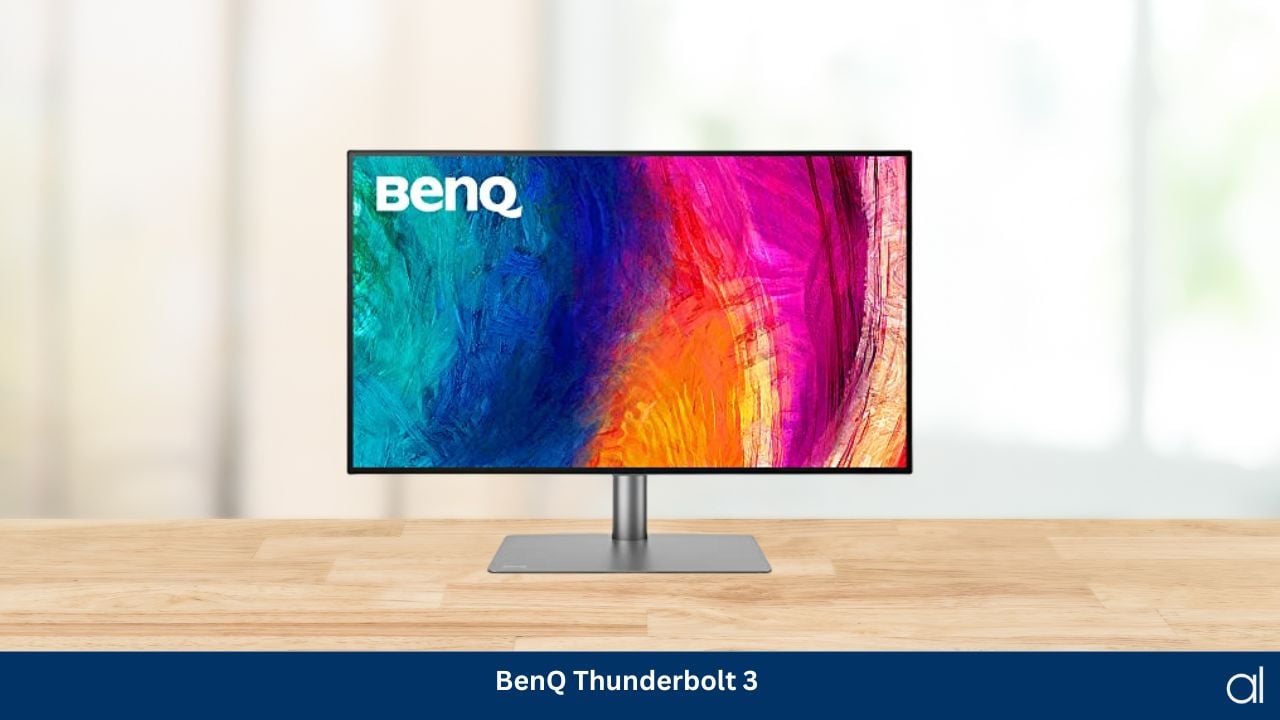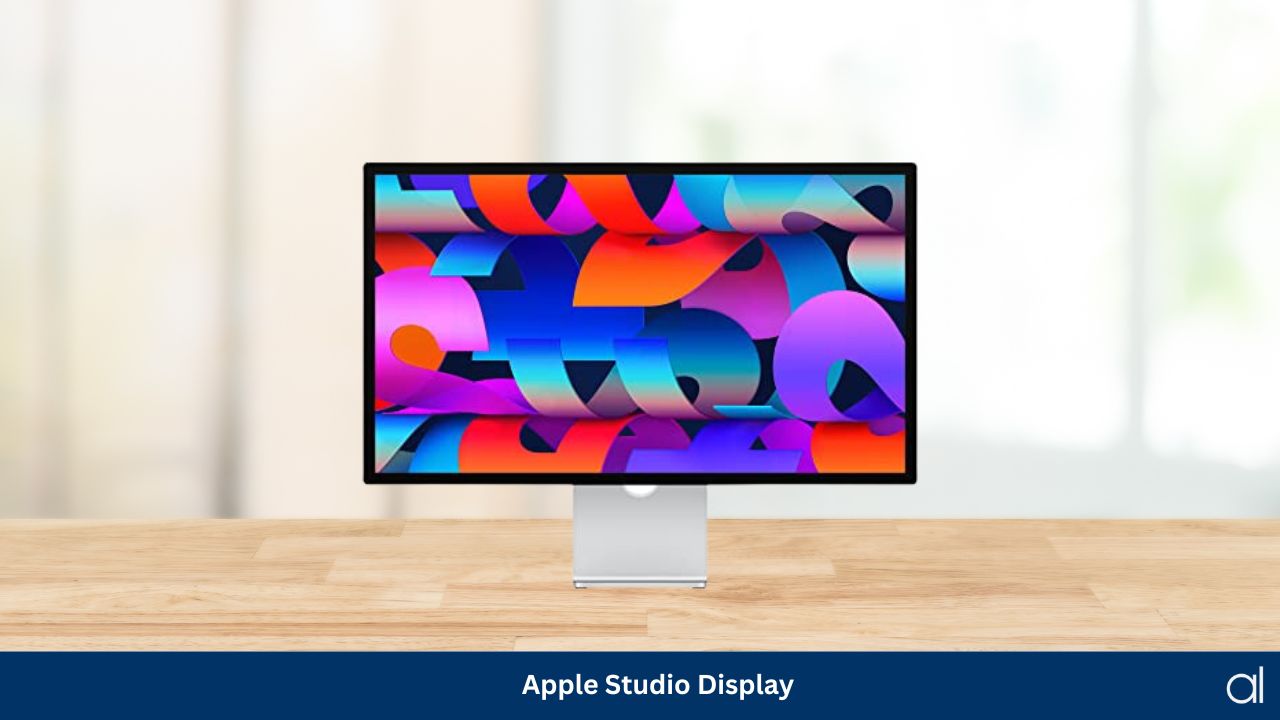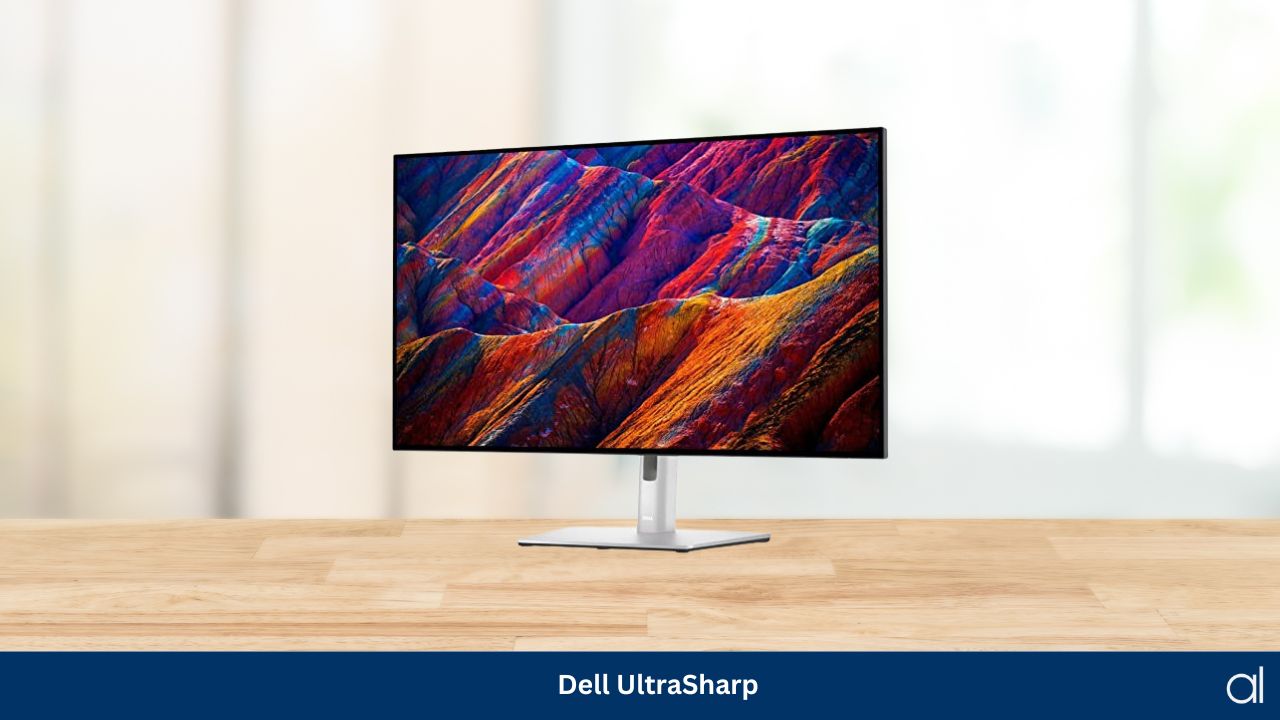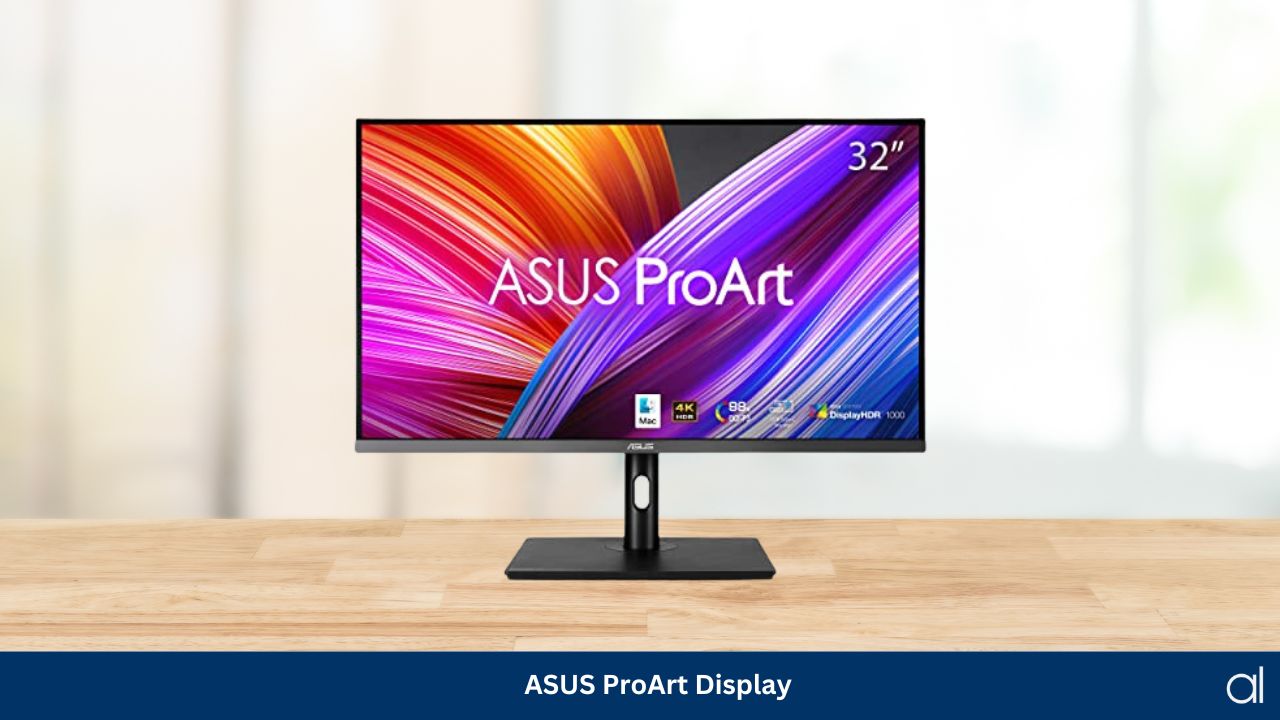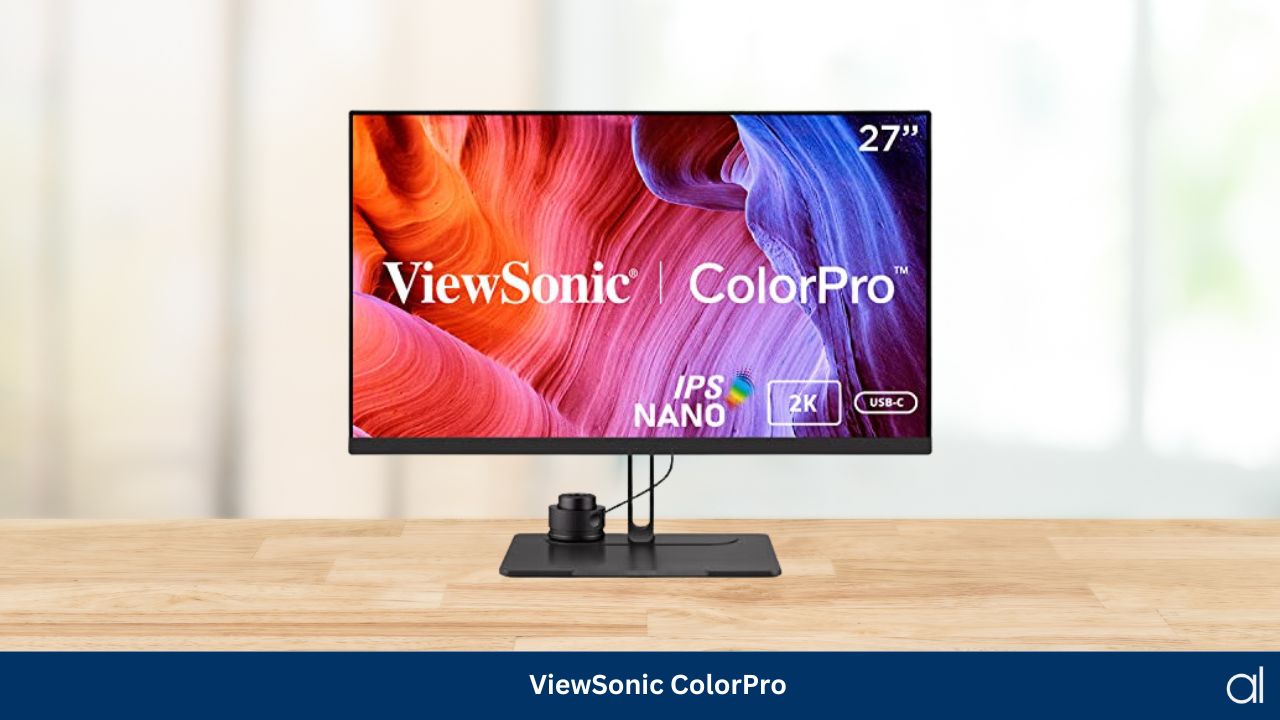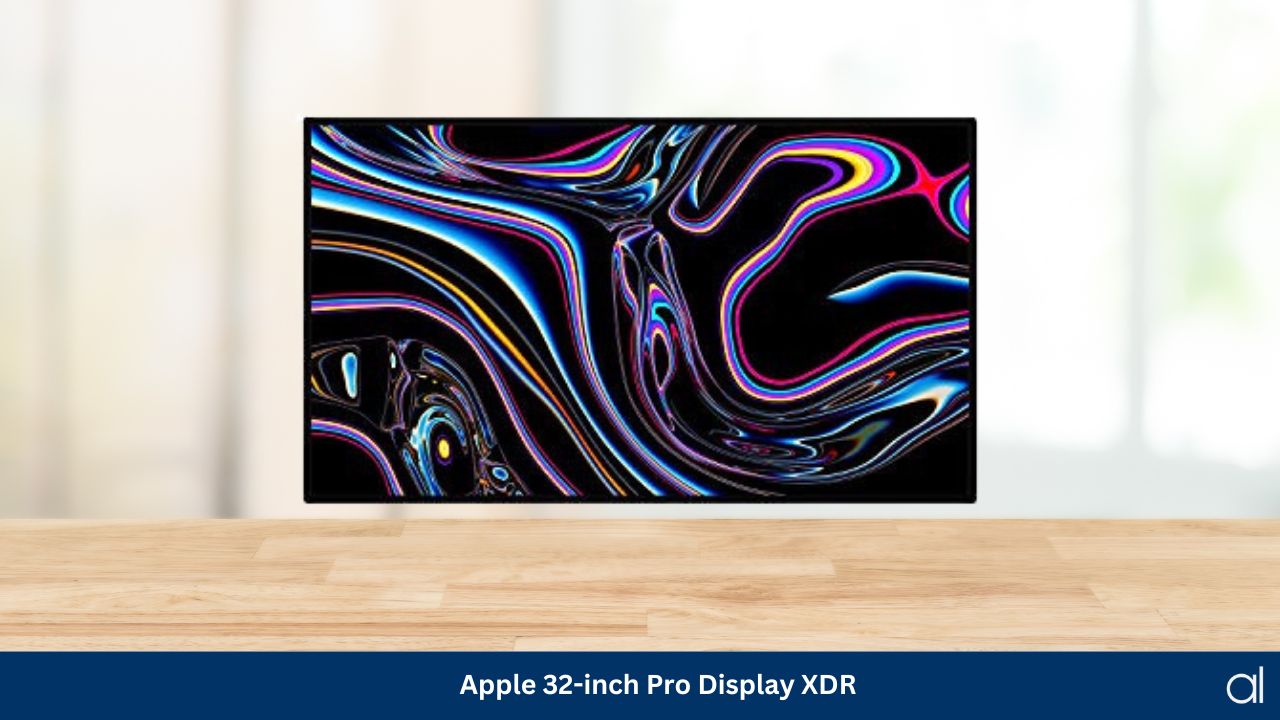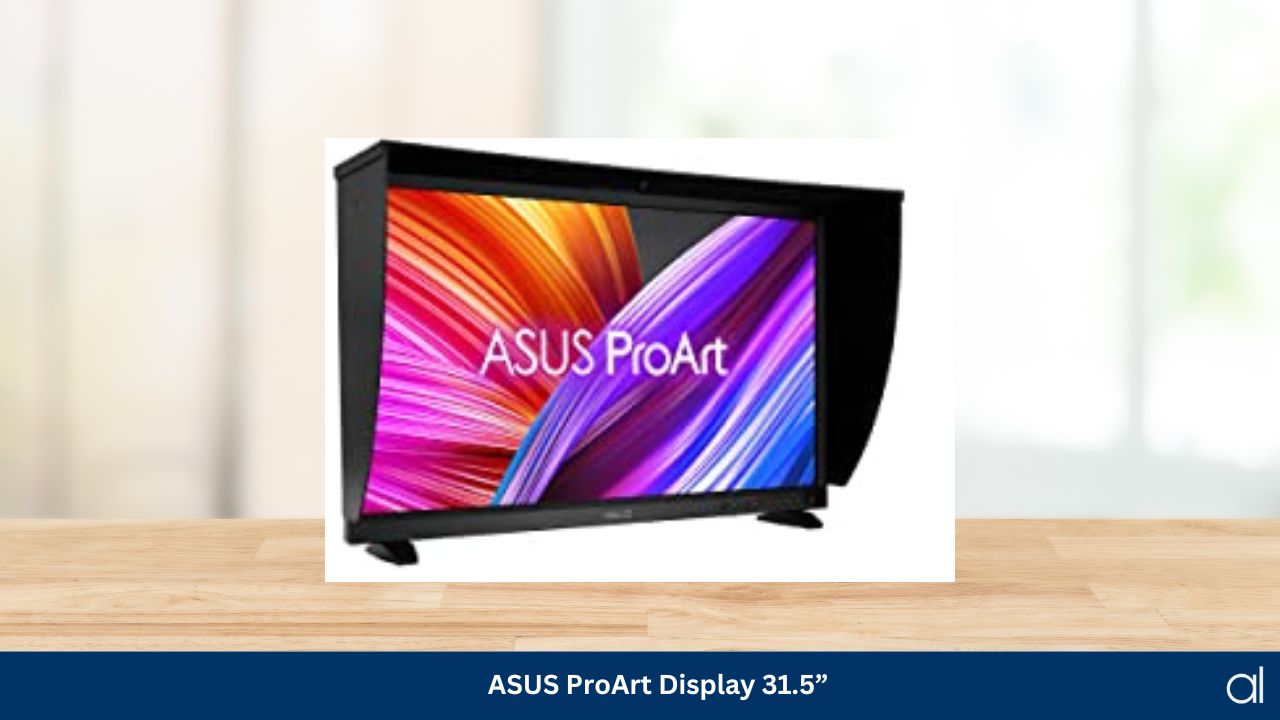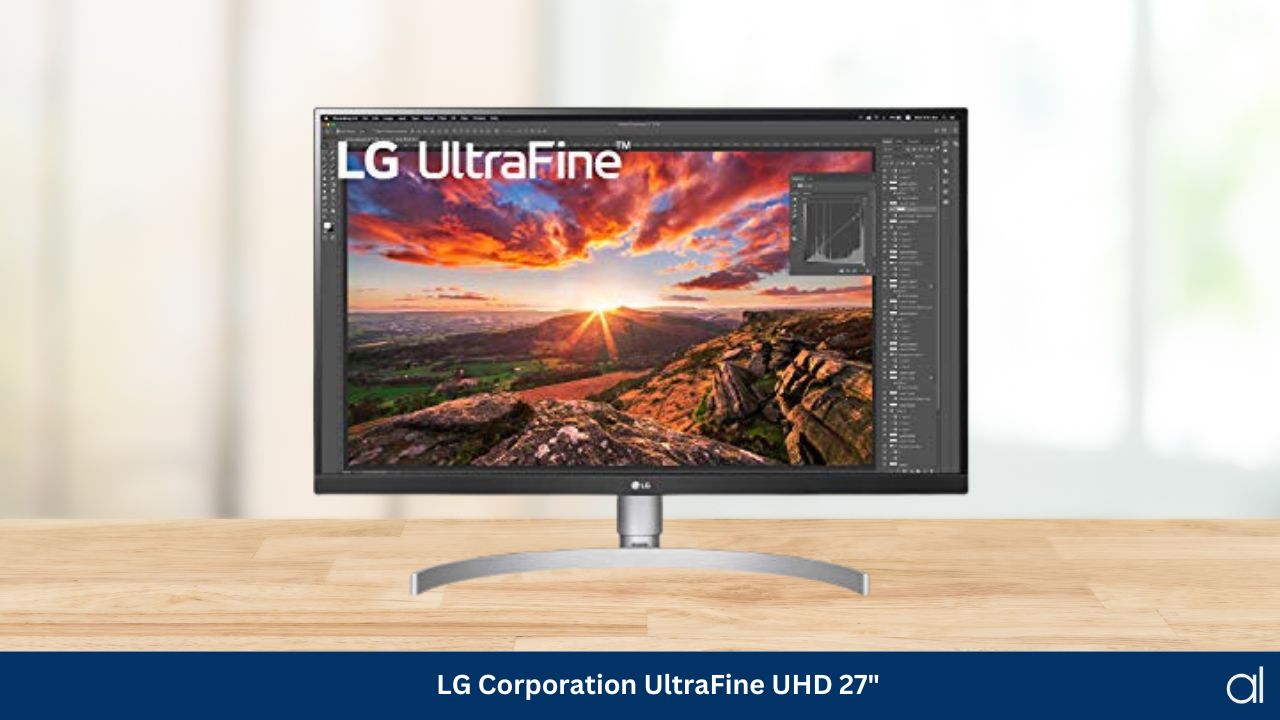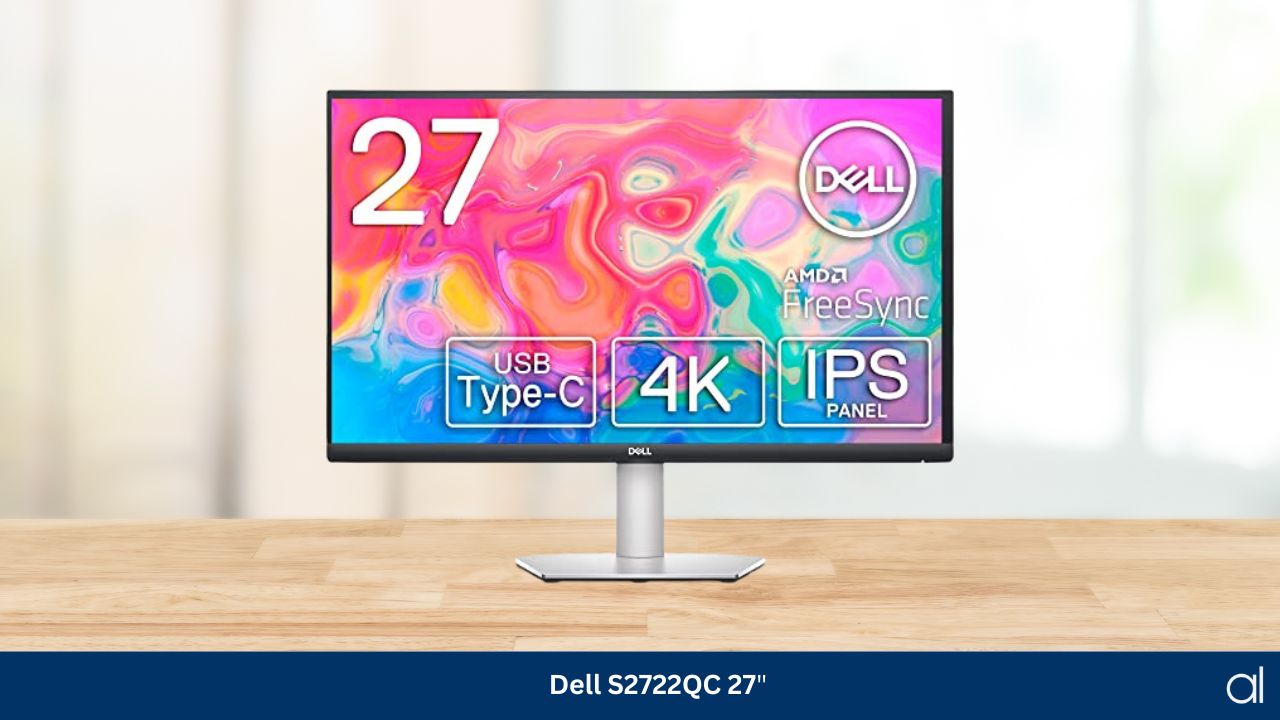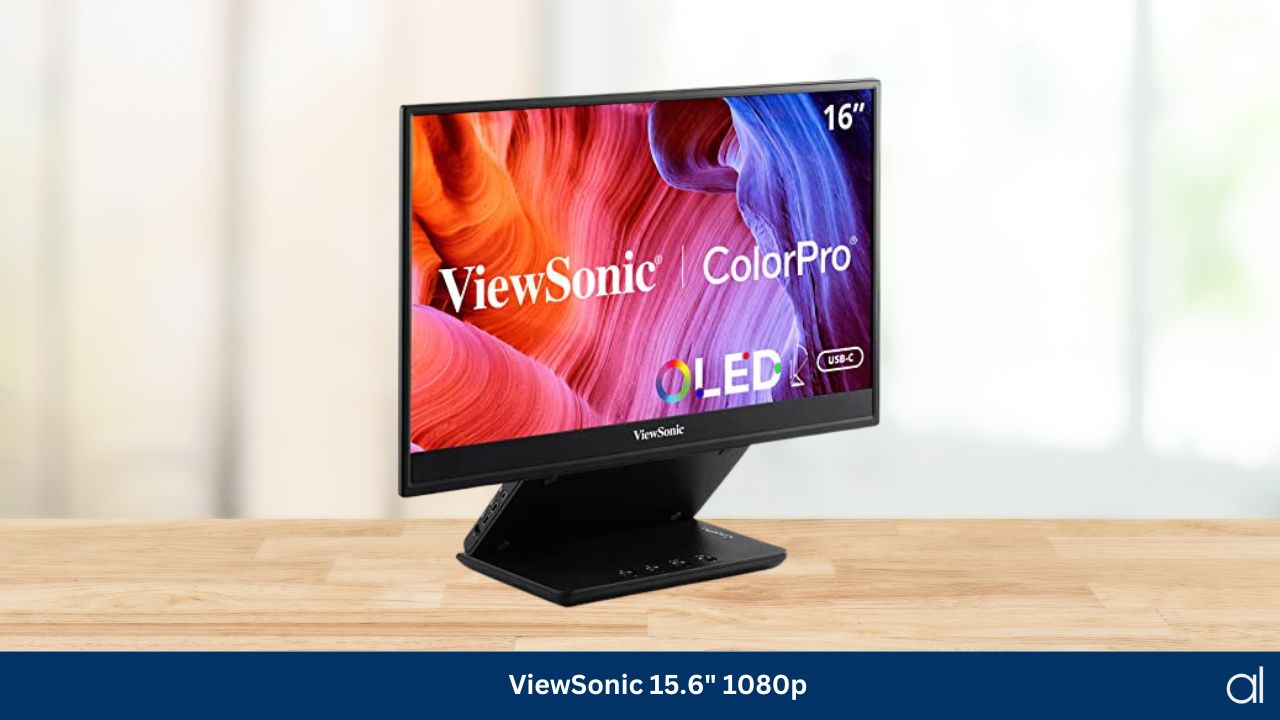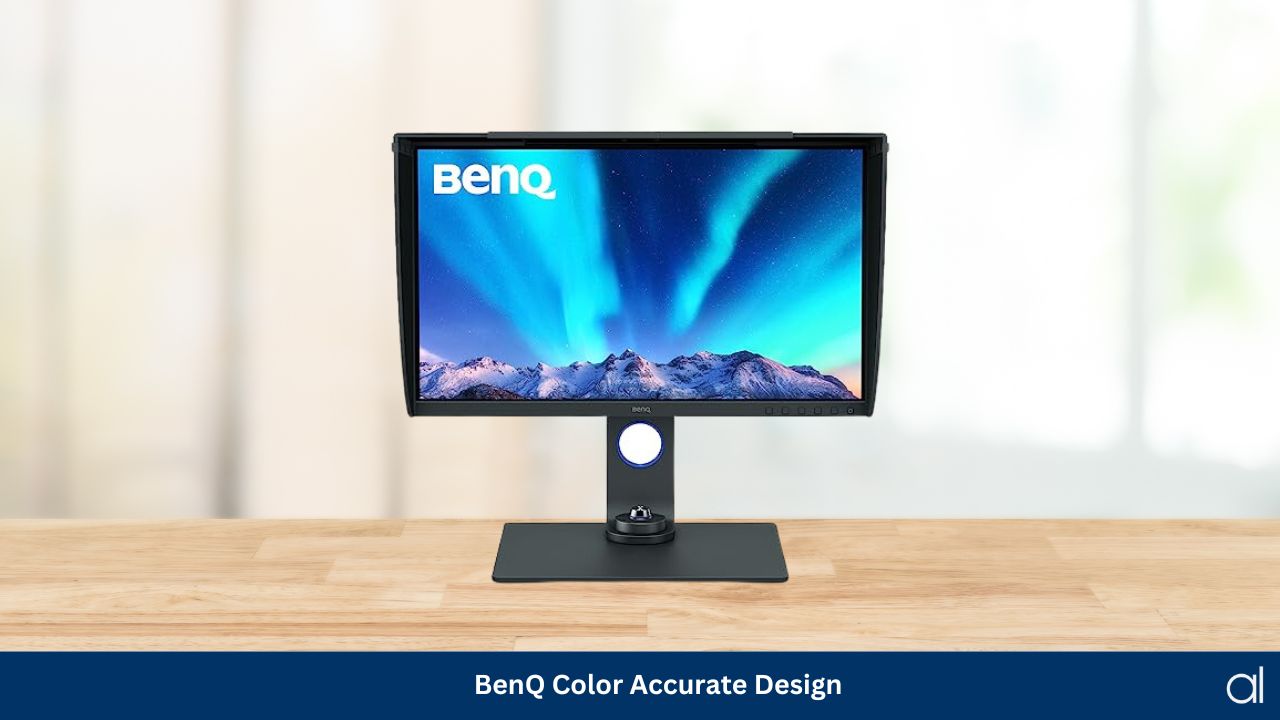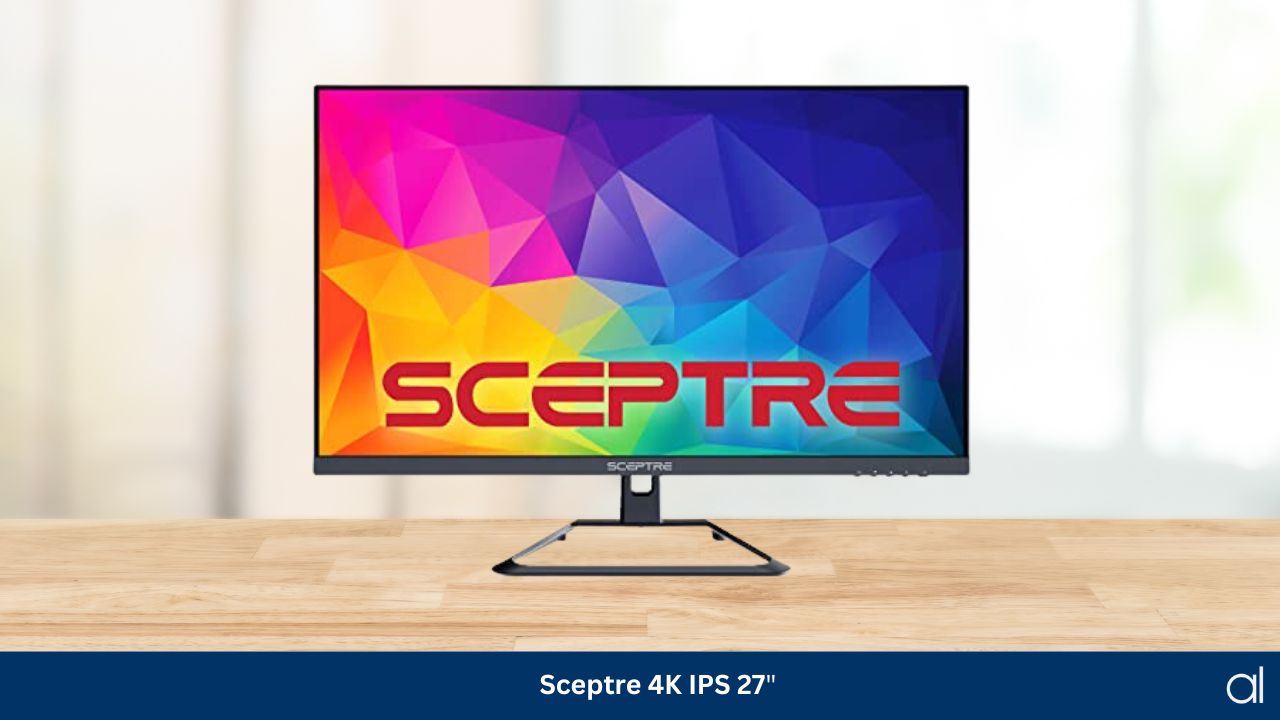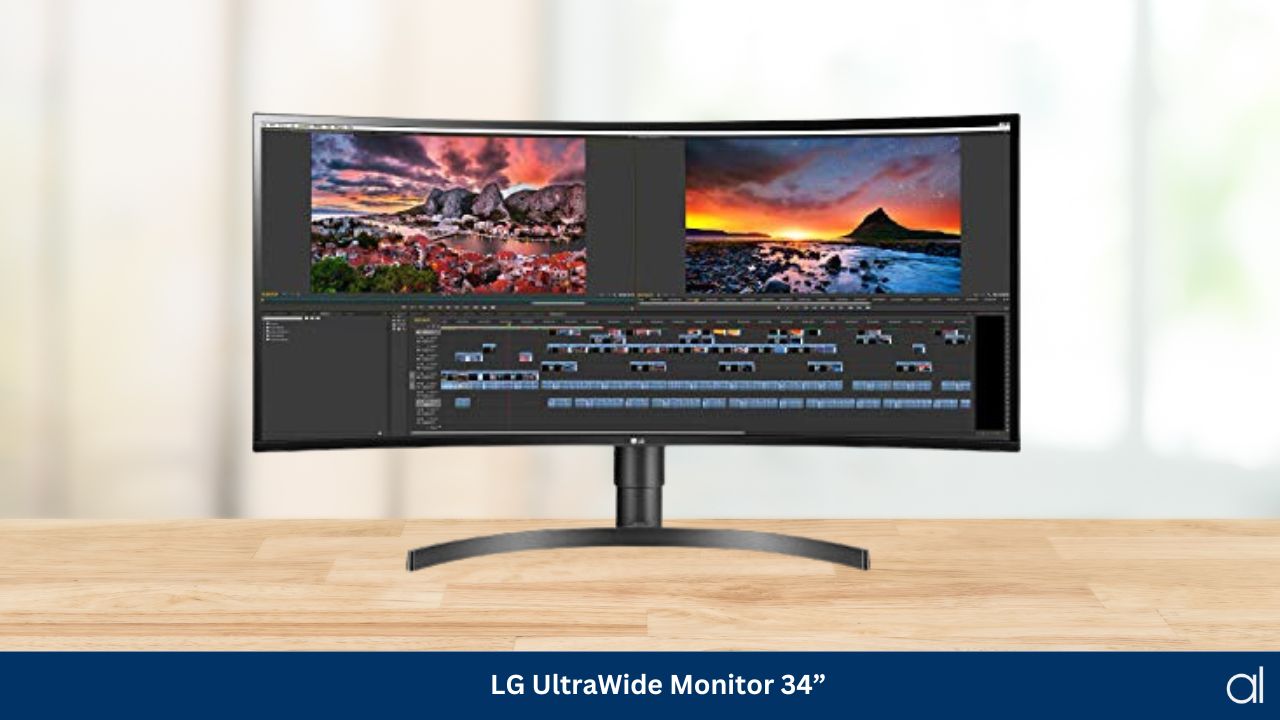Do colors appear washed out while editing? Details lack the vibrancy you saw with your eyes, and the magic you felt behind the lens is lost in translation…do you often face this?
Well, fear not because there is a solution in the form of specialized monitors for photo editing. In this article, I present to you my handpicked selection of the absolute best monitors for photo editing that will revolutionize your journey.
Best Monitors For Photo Editing Reviews
1. BenQ Thunderbolt 3 Monitor PD3220U – Best Overall
With a stunning 4k resolution UHD display, this desktop computer monitor delivers an immersive viewing experience that will bring your graphics to life. But it’s not just about the pixels; it is about color accuracy and precision too.
The PD3220U by BenQ boasts an impressive 100% Rec. 709 color gamut and covers 90% of the P3 color space, ensuring vibrant and true-to-life colors in your images.
Talking about precision, this monitor has IPS technology, which means you’ll enjoy wide viewing angles and consistent colors across the screen. Giving it a try showed me that the monitor has Calman Verified Color Accurate Technology for another layer of confidence in its color reproduction capabilities.
It’s equipped with Thunderbolt 3 and USB C (85W) connectivity, allowing you to hook up your devices effortlessly. The USB Hub and Daisy Chain Technology further enhance its connectivity options.
You can easily adjust the height, swivel, tilt, and pivot to find the perfect viewing position. And if you want to protect your eyes during those long editing sessions, the flicker-free technology and blue light filter have got you covered.
Wrapping it up, the BenQ Thunderbolt 3 Photo Editing Monitor PD3220U is a fantastic choice for photography and image editing enthusiasts. Its impeccable color accuracy, wide color gamut, and detailed color calibration ensure that your creative vision is faithfully translated onto the screen.
What I Liked
- Impressive color accuracy with 100% Rec. 709 color gamut
- 95% P3 color space coverage
- Wide viewing angles and consistent colors with IPS technology
- Convenient connectivity options
What I Didn’t Like
2. Apple Studio Display MK0U3LL/A – Best Retina Display
This product from Apple boasts a jaw-dropping 5k Retina resolution, offering an incredibly sharp and vibrant digital visual interface. With 600 nits of brightness, your images and videos will pop off the screen with lifelike clarity.
Whether you’re editing photos, creating content, or simply enjoying multimedia, this display is a feast for the eyes.
But the Apple Studio Display isn’t just about visuals; it’s about capturing the moments too. With its integrated 12 MP camera, you can take stunning photos and record videos in high image resolution. After closely examining the product, I realized that the UltraWide format camera with Center Stage intelligently keeps you in focus during video calls, automatically adjusting and panning to keep you in front and center.
Audio is another area where Apple Studio Display excels. It features spatial audio, providing an immersive sound experience that envelops you. With a six-speaker system and a three-mic array, this photo editing monitor delivers studio-quality audio for crystal-clear calls and recordings.
What I Liked
- 5k Retina display
- 12 MP Integrated webcam
- Ultra Wide camera with Center Stage
- Immersive sound experience with spatial audio
What I Didn’t Like
3. Dell UltraSharp U3223QE – Best For Smooth Motion and Fast Response Time
The Dell UltraSharp’s 16:9 aspect ratio provides a cinematic viewing experience, immersing you in your favorite movies, games, and projects. Plus, with a maximum graphics display resolution of 3840 x 2160 and more than 8 million pixels, your images and videos will be incredibly sharp and lifelike.
With a display port, USB port, Ethernet port, and HDMI ports, you’ll have no trouble connecting with your devices and peripherals. Dell UltraSharp Mid Range Monitor features height adjustment and VESA mount capabilities for added convenience.
Although the brightness level is 400 nits, which is slightly lower compared to other photo editing monitors, it still provides a vibrant and well-lit display under normal conditions.
The 75 Hz refresh rate in Dell monitors provides smooth and fluid motion, reducing motion blur for an enhanced gaming or viewing experience. And with a fast 5ms GTG response time, you can say goodbye to annoying ghosting and lags.
What I Liked
- Cinematic viewing experience
- VESA mount and height adjustment
- Smooth and fluid motion
- 5ms GTG response time
What I Didn’t Like
4. ASUS ProArt Display PA32UCR-K – R–Brightest Asus Monitor
The ProArt Display features IPS Screen technology with mini-LEDmm backlight, offering deeper blacks and brighter whites compared to traditional light-emitting diode displays.
With a peak brightness of 1000 nits, this photo editing monitor brings stunning HDR content to life, immersing you in vivid and lifelike visuals. In terms of color accuracy, the ProArt Display shines with a ΔE value of less than 1, ensuring true-to-life color representation that is sure to impress anyone. Speaking of colors, this photo editing monitor covers an impressive 98% DCI-P3 and 99.5% Adobe RGB color space.
With the included X-rite i1 calibrator, you can easily calibrate and fine-tune the display to achieve optimal color performance. The wide viewing angle IPS panel ensures consistent colors and sharp visuals, even when viewed from different angles. Human factors and ergonomics, too, are well taken care of, with features like height adjustment, a flicker-free display device, pivot adjustments, and tilt adjustment.
What I Liked
- 99.5% of Adobe RGB color space can be accessed
- ΔE value less than 1 and wide color space coverage
- Mini-LED backlight
- Stunning HDR content with a peak brightness of 1000 nits
What I Didn’t Like
5. ViewSonic VP2776 – Best Refresh Rate
The ViewSonic USB-C Monitor delivers accuracy with its Delta E color accuracy of less than 2. The colors you see on the screen are incredibly close to real life, ensuring an accurate and precise representation of your content.
The Pantone Certification further enhances the credibility of its color performance. The 95% DCI P3 color coverage ensures rich and vibrant colors, making it a great choice if you are looking for the best monitors for photo editing and video editing.
My findings show that it allows USB-C technology, enabling you to connect video, audio, data, and power with a single 90W cable to reduce cable clutter and simplify your setup.
Eye comfort is a priority with the ViewSonic Photo Editing Monitor. The easily attachable magnetic hood reduces glare. The fast 165 Hz refresh rate ensures smooth and fluid motion, minimizing motion blur.
With its VESA Display HDR 400 certification, this photo editing monitor delivers improved contrast and vivid colors, adding depth and realism to your content. And the adaptive sync and G-sync compatibility further enhance its overall performance, eliminating screen tearing and stuttering.
What I Liked
- Incredible color accuracy with delta E<2
- Pantone Validation
- Eye Comfort with Magnetic Hood
- Fast 165 Hz refresh rate
What I Didn’t Like
6. Apple 32-inch Pro Display XDR MWPE2LL/A – Best For Exceptional Brightness Levels
This 32-inch screen provides a whopping resolution of 6016×3384 pixels. And that’s an insane level of detail, allowing you to scrutinize every pixel with precision. The colors are truly something to behold, with a billion colors presented with exceptional accuracy. From vibrant red to subtle blues, this monitor ensures your photos come to life exactly as intended.
Also, the Adaptive Sync is a gem of a feature, and after spending time with it, I found out that it helps in reducing screen tearing and stuttering. The brightness offered is a staggering 1600 nits. And the contrast ratio is equally impressive, delivering deep blacks and brighter whites that make your images pop off the screen.
It offers a Thunderbolt 3 port and 3 USB-C ports. The reference modes have predefined settings that allow you to switch between different color spaces effortlessly. Whether you are working in sRGB or P3 in this monitor for photo editing, it will ensure your edits are consistent and accurate across all platforms.
What I Liked
- High resolution of 6016×3384 pixels<2
- Thunderbolt 3 port and 3 USB-C port
- Predefined settings with reference modes
- Impressive contrast ratio
What I Didn’t Like
7. ASUS ProArt Display 31.5” PA32DC – Best In Delta Ratings and Contrast Ratio
The heart of this monitor is the built-in motorized colorimeter. This innovative feature allows you to calibrate your display with ease, ensuring accurate color reproduction every time.
With true 10-bit color depth and support for 99% DCI-P3 color gamut, this monitor is a dream come true for professionals who work with broadcast and satellite-based ultra-high-definition television platforms.
The ASUS ProArt Display boasts HDR 10 support, making it perfect for content creation. Its OLED technology delivers vivid and lifelike colors, with each individual pixel serving as its own light source.
This monitor delivers a remarkable ΔE<1 rating. Plus, it’s compatible with major calibrators from X-Rite, DataColor, and Klein, giving you the flexibility to use the tool you prefer. This monitor for photo editing offers two versatile stand options and is compatible with both laptop and Mac monitors like the MacBook Pro.
And let’s not forget about the impressive 1,000,000:1 contrast ratio, delivering deep blacks and stunning whites. The VESA DisplayHDR certification further enhances its overall credibility for image clarity.
What I Liked
- Built-in motorized colorimeter
- 1,000,000:1 contrast ratio
- VESA DisplayHDR certification
- Remarkable ΔE<1 rating
What I Didn’t Like
8. LG Corporation UltraFine UHD 27-Inch 27UN850-W – Best For Responsive and Fluid Workflow
This sleek and powerful display is packed with features for optical immersion and performing a variety of tasks. The IPS display technology provides accuracy in color reproduction and wide viewing angles. It also has VESA DisplayHDR 400 certification for enhanced contrast and brightness, with HDR content truly coming to life on the screen.
The high dynamic range capability brings out the details in both dark and bright scenes. For gamers, this monitor offers AMD FreeSync Technology to minimize input lag and reduce screen tearing resulting in smoother motion.
Paired with a 60 Hz refresh rate and Radeon FreeSync support, you can enjoy responsive and fluid gameplay with less stuttering. The Game Mode and Dynamic Action Sync further enhance the gaming experience, allowing you to react quickly.
Productivity is also a breeze with the screen split feature. The connectivity options are abundant with the USB-C and USB Hub. In terms of color accuracy, the LG UltraFine UHD 27UN850-W covers 99% of the sRGB visible spectrum. Overall, it is a versatile display that excels in both gaming and editing.
What I Liked
- Affordable pricing
- Game Mode and Dynamic Action Sync
- Covers 99% of the sRGB spectrum
- Radeon FreeSync support
What I Didn’t Like
9. Dell S2722QC 27-inch 4K S2722QC – Best for Wide 178°/178° Viewing Angle
This 27-inch monitor boasts a 4k resolution of 3840 x 2160 pixels. The level of detail and sharpness is absolutely mind-blowing.
The Dell S2722QC supports 1.07 billion colors. Your images will come to life with vibrant and true-to-life hues. The monitor’s viewing angles are exceptional, with a wide 178°/178° viewing angle that ensures consistent and accurate colors from any position.
The USB-C port simplifies your workspace setup and reduces cable clutter. Plus, the SuperSpeed USB 5 Gbps port in this budget monitor ensures fast data transfer for your peripherals.
The AMD FreeSync Technology synchronizes the monitor’s refresh rate with your graphics card. Based on my observations, it helps in reducing screen tearing and providing smooth visuals. After giving it a go, I found that the motion was buttery-smooth, allowing me to examine every detail without any distractions or lags.
To further enhance the experience, this monitor features built-in 3W speakers. They deliver rich and clear sound, adding depth to your multimedia experience. If you prefer using external speakers, there’s also an audio line-out port available.
The flicker-free technology reduces eye strain, ensuring you can work for longer periods without any discomfort. The security-lock slot provides peace of mind, keeping your monitor safe and secure. So, if you are a graphic designer or photographer looking to elevate your editing game, this monitor is definitely worth considering.
What I Liked
- Cost-effective monitor
- Built-in 3W speakers
- Wide 178°/178° viewing angle
- AMD FreeSync Technology
What I Didn’t Like
10. ViewSonic 15.6 Inch 1080p VP16-OLED – 100% DCI-P3 Coverage
The ViewSonic 15.6 inch 1080p portable OLED monitor is compact, portable, and feature-packed. It features a Pantone Validated and factory-calibrated display. The colors pop off the screen, thanks to the OLED technology.
With a 1ms GTG response time, this monitor delivers ultra-fast performance and eliminates motion blur. And even more, it offers 100% DCI-P3 coverage for a wide and accurate color gamut.
In terms of color accuracy, this monitor achieves an impressive Delta E<2 rating. It offers USB-C connectivity with 40W two-way power, meaning you can power your monitor and charge your devices at the same time. It’s all about efficiency and convenience.
The ViewSonic portable monitor offers an included detachable monitor hood. This helps to minimize glare and provides a more immersive viewing experience. It’s a thoughtful addition that enhances your visual comfort, especially in brightly lit environments.
What I Liked
- 1ms GTG response time
- USB-C connectivity with 40W two-way power
- 100% DCI-P3 coverage
- Included detachable monitor hood
What I Didn’t Like
11. BenQ PD2700U – Best for Eye Health Conscious Monitor
The BenQ PD2700U is designed with professionals in mind, boasting 100% Rec. 709 and sRGB color space. The Delta E ≤3 ensures minimal color deviation, allowing you to have confidence in your workflow.
The monitor features AQCOLOR technology to enhance color accuracy and consistency. The monitor is Calman Verified and Pantone Validated, providing you with an added guarantee of its color accuracy.
The BenQ PD2700U is also HDR-10 compatible, delivering a wider dynamic range and richer colors. The Daisy chain connectivity capabilities allow you to connect multiple monitors together, creating a seamless and clutter-free setup.
This brand has also considered the important aspect of eye health with its Eye-Care Technology. The anti-glare screen reduces reflections and minimizes eye strain. It’s a thoughtful feature that ensures you can work comfortably for longer periods.
Another standout feature is the KVM switch capability, which allows you to control two systems with just one monitor. And lastly, the monitor comes with built-in speakers. While they may not replace dedicated speakers, they offer pretty decent sound quality for casual use.
What I Liked
- Built-in speakers
- KVM switch capability
- Daisy chain connectivity
- Anti-glare screen
What I Didn’t Like
12. Sceptre 4K IPS 27″ U275W-UPT – Best For Wide Viewing Angle
This 27-inch monitor has a resolution of 3840 x 2160 pixels, delivering stunning visuals and excellent image quality. The monitor also features an IPS panel for wide viewing angles.
With a viewing angle of 179 degrees, both horizontally and vertically, you can enjoy consistent and accurate colors from virtually any angle.
The Sceptre monitor delivers 99% sRGB coverage resulting in colors that are vibrant and true to life. You can easily connect your devices with DisplayPorts and HDMI ports. And with a refresh rate of up to 70 Hz, you can be sure of a smooth and responsive experience.
It incorporates flicker-free technology and a blue light filter. It also comes with built-in speakers and, design-wise has a sleek, minimalist look with its black color and slim bezels. It blends well with any setup and adds a touch of elegance to your workplace.
What I Liked
- Affordable
- 99% sRGB coverage
- Viewing angle of 179 degrees
- A sleek and minimalist look
What I Didn’t Like
13. LG 34WN80C-B UltraWide Monitor 34” – Best for Stunning sRGB Display
The LG 34WN80C-B offers a 34-inch UltraWide screen with a cinematic 21:9 aspect ratio. The curved design wraps you up in a panoramic visual experience. With a WQHD resolution of 3440 x 1440 pixels, the display offers sharp and detailed images.
It supports a 99% sRGB color gamut delivering vibrant, rich, and accurate colors. The monitor supports HDR 10, enabling a wider range of colors. Its HDR content comes to life in both dark and bright areas and delivers realistic and captivating visuals.
The LG 34WN80C-B also features an on-screen control, which allows you to easily adjust various settings and customize your display preferences with just a few clicks.In terms of design, this monitor for photo editing features a virtually borderless design, maximizing the screen space and creating a clean and modern look on your desk. The monitor stand is tilt and height adjustable, allowing you to find the perfect ergonomic position for your comfort.
What I Liked
- Virtually borderless design
- Cinematic 21:9 aspect ratio
- 99% sRGB color gamut
- Supports HDR 10
What I Didn’t Like
Top Monitors For Photo Editing Comparison Table
| Top Monitors | Screen Size | Display Resolution | Refresh Rate | Special Feature |
|---|---|---|---|---|
| BenQ Thunderbolt 3 Monitor PD3220U | 32 Inches | 3840 x 2160 Pixel | 60 hz | Blue Light Filter & Anti Glare Screen |
| Apple Studio Display MK0U3LL/A | 27 Inches | 5120 x 2880 Pixels | 60 hz | USB Hub, Built-In Speakers |
| Dell UltraSharp U3223QE | 31.5 Inches | 3840 x 2160 Pixels | 75 Hz | Height Adjustment |
| ASUS ProArt Display PA32UCR-K | 32 Inches | 3840 x 2160 Pixels | 60 Hz | Blue Light Filter, Tilt Adjustment, Flicker-Free |
| ViewSonic VP2776 | 27 Inch | 2560 x 1440 pixels | 165 Hz | Adaptive Sync, Blue Light Filter, Built-In Speakers |
| Apple 32-inch Pro Display XDR MWPE2LL/A | 32 Inches | 6016 by 3384 Pixels | 60 Hz | Adaptive Sync, Ultrawide Screen, USB Hub |
| ASUS ProArt Display 31.5” PA32DC | 31.5 Inches | 3840 x 2160 Pixels | 60 Hz | Blue Light Filter, Swivel Adjustment |
| LG Corporation UltraFine UHD 27-Inch 27UN850-W | 27 Inches | 3840 x 2160 Pixels | 60 Hz | High Dynamic Range, USB Hub |
| Dell S2722QC 27-inch 4K S2722QC | 27 Inches | 3840 x 2160 | 60 Hz | Flicker-Free, Built-In Speakers |
| ViewSonic 15.6 Inch 1080p VP16-OLED | 16 Inches | 1920 x 1080 Pixels | 60 Hz | Tilt Adjustment, Built-In Speakers |
| BenQ PD2700U | 27 Inches | 3840×2160 Pixels | 60 Hz | Anti Glare Screen, High Dynamic Range |
| Sceptre 4K IPS 27″ U275W-UPT | 27 Inches | 3840 x 2160 Pixels | 70 Hz | Built-in Speaker, Flicker-Free, Blue Light Filter |
| LG 34WN80C-B UltraWide Monitor 34” | 34 Inches | 3440 x 1440 Pixels | 60 Hz | Ultra-wide, Curved |
Buying Guide For The Best Monitors For Photo Editing
1. Brightness And Contrast
Brightness and contrast play a vital role in the overall image quality and accuracy. A monitor with sufficient brightness ensures that your photos appear vibrant and true to life. The brightness level is measured in nits, with higher values indicating a better display.
It is recommended to choose a monitor for photo editing that has a brightness level of 250 nits or higher in a monitor for photo editing.
The contrast ratio measures the difference between the darkest and brightest parts of an image. In a monitor for photo editing, a higher contrast ratio results in deeper blacks and brighter whites to enhance the overall depth and details.
Look for monitors designed with a high contrast ratio, ideally above 1000:1, to achieve accurate and dynamic visuals. A portable monitor with excellent brightness and contrast capabilities will allow you to view even the finest details in your photos.
2. Panel Type
The panel type of a monitor determines its viewing angles, color accuracy, and response time. In a monitor for photo editing, an IPS (In-Plane Switching) panel is generally preferred due to its wide viewing angles and precise color reproduction when printed on a sheet of paper.
IPS panels provide consistent image quality even when viewed from different angles, making it easier to collaborate or showcase your work to others.
While IPS panels offer excellent color accuracy, other panel types like VA (Vertical Alignment) and TN (Twisted Nematic) have their own advantages. VA panels provide deeper blacks and higher contrast ratios, making them suitable for media consumption as well.
TN panels, on the other hand, offer faster response times, making them ideal for gaming or fast-paced video editing. Consider your specific requirements and prioritize color accuracy when choosing a monitor for photo editing.
3. Display Resolution
Display resolution refers to the number of pixels that make up the screen, determining the level of detail and clarity in your images. Higher resolutions provide more pixels, allowing you to work with multiple editing tools and larger and more detailed images.
In a monitor for photo editing, consider monitors with 4K (3840 x 2160) or WQHD (2560 x 1440) resolutions for sharper details and precise editing capabilities.
The ideal display resolution depends on the display size of the monitor and your preference for pixel density. Higher resolutions on larger screens ensure that individual pixels are less noticeable, resulting in more detailed yet smoother images.
However, if you opt for a smaller monitor, a lower resolution like 1440p (2560 x 1440) can still provide sufficient detail without straining the resources of your personal computer.
4. Color Accuracy
Color accuracy is of utmost importance in photo editing, as it ensures that the colors you see on the monitor are faithful to the original image. Look for a monitor for photo editing that supports a wide color gamut, such as sRGB and Adobe RGB color models, as they offer a broader range of colors to work with.
A wider color gamut allows you to accurately reproduce vibrant and saturated colors using a printer, making your photos come to life.
To ensure consistent and precise color accuracy, consider monitors that have built-in color calibration capabilities or support hardware calibration. This enables you to calibrate the monitor to industry-standard color profiles, such as Pantone or ICC profiles, resulting in accurate and consistent color. Look for monitors that provide color calibration reports or certifications to validate their color accuracy claims.
Delta E is another important metric that measures the color deviation from the ideal reference value. A lower delta E value indicates a more accurate representation.
Ideally, a monitor for photo editing should have a Delta E value of less than 3 for minimum color deviation. Some high-end monitors offer Delta E values below 2 and even 1, providing stunning color accuracy for professional photo editing tasks.
5. Additional Features
While the above features are crucial for photo editing, there are many additional features that can enhance your workflow and overall user experience:
A. Connectivity Options
Consider the connectivity options available on the monitor. USB 3.0, USB C, and USB A ports provide convenience and versatility, allowing you to connect your monitor to compatible devices with a single cable for both power and data transfer. HDMI and DisplayPort are also important for connecting your monitor to different devices and peripherals. Going for a monitor with an integrated stand may also boost up your productivity.
B. Blue Light Filters
Photo editing often involves long hours in front of the screen, so monitors with built-in blue light filters or low blue light modes can help reduce eye strain and fatigue. These features minimize the amount of blue light emitted by the monitor, making it more comfortable for extended editing sessions.
C. Ergonomics
Pay attention to the ergonomics of the monitor, including height adjustment, tilt adjustment, swivel, and pivot capabilities. These small but improved elements allow you to adjust the screen’s position according to your comfort and preferred angle, helping you feel more comfortable even during long editing sessions.
D. Software Compatibility
Consider the compatibility of the monitor with popular photo editing software such as Adobe Photoshop and Adobe Lightroom. Certain monitors come with pre-calibrated color profiles specific to these software applications, ensuring optimal color accuracy and performance.
E. Additional Color Modes
Some monitors offer specialized color modes, such as black and white or color temperature presets, which can be useful for specific editing tasks or achieving a particular aesthetic. These modes provide quick adjustments to color settings without the need for manual calibration.
While these additional features can enhance your photo editing experience, prioritize the core features of color accuracy, resolution, panel type, and brightness/contrast when making your decision. Assess your specific needs, budget, and the demands of your workflow to find the right balance of features for your high-definition video editing requirements.
Can I use a touchscreen monitor for photo editing?
Touchscreen monitors can be convenient for certain tasks, but they are not a necessity for photo editing. The accuracy and precision required for detailed editing are typically better achieved with a mouse or stylus input.
Can I use a mid-range monitor for photo editing, or do I need to invest in a high-end monitor?
While high-end monitors often offer advanced features and superior image quality, many mid-range monitors also provide excellent color accuracy and resolution suitable for photo editing. Assess your specific needs and budget to find the best mid-range monitor for photo editing that suits your requirements.
Is it necessary to have a photo editing monitor with a high refresh rate for photo editing?
A high refresh rate is not essential for photo editing tasks as it primarily benefits gaming and fast-paced motion content. However, a smooth and responsive display can enhance the overall user experience, especially when navigating through images and editing software.
What operating system is best for photo editing on these monitors?
Photo editing can be done on various operating systems, including Microsoft Windows and macOS. Choose an operating system that you are comfortable with and ensure that your photo editing software is compatible with it.
Can I use a monitor with a lower bit depth, such as 6-bit or 8-bit computing depth, for photo editing?
While higher bit depths, such as 10-bit or higher, can provide more accurate color representation, monitors with lower bit depths can still be used for photo editing, especially if they have good calibration options.
However, it’s important to note that a higher bit depth monitor can offer a wider range of colors and smoother color gradients.
Conclusion
So now, as you know, investing some money in the best photo editing monitor is going to significantly impact the quality and accuracy of your work.
My top picks for the best monitors for photo editing will be The BenQ PD3220U and The Apple Studio Display MK0U3LL/A.
The BenQ PD3220U is an exceptional choice for photo editing due to its extensive color gamut and detailed calibration. With a 4K UHD display, it brings your graphics to life with stunning clarity.
On the other hand, the Apple Studio Display MK0U3LL/A offers an unparalleled visual experience with its jaw-dropping 5K Retina resolution. It offers 600 nits of brightness, a 12 MP camera, and intelligent video call features.
The Best Monitors for photo editing should ideally go beyond just their display capabilities. They should offer a range of features to enhance “your” overall editing experience and convenience.
Related Articles
7 Best Monitors for Artists and Architects
9 Best Curved Monitor For Architects

